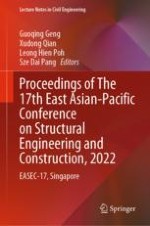2023 | OriginalPaper | Buchkapitel
Investigation of the Performance of a Bioinspired Two-Fold Blades Wind Turbine with Airfoil Blade Sections by Using QBlade
verfasst von : Yung-Jeh Chu, Heung-Fai Lam, Hua-Yi Peng
Erschienen in: Proceedings of The 17th East Asian-Pacific Conference on Structural Engineering and Construction, 2022
Verlag: Springer Nature Singapore
Aktivieren Sie unsere intelligente Suche, um passende Fachinhalte oder Patente zu finden.
Wählen Sie Textabschnitte aus um mit Künstlicher Intelligenz passenden Patente zu finden. powered by
Markieren Sie Textabschnitte, um KI-gestützt weitere passende Inhalte zu finden. powered by
